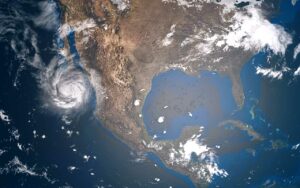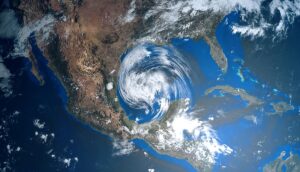Scientists are telling us that climate change is happening and is a danger. While not denying their assessment, is major media overhyping the situation with fear-based headlines to gain viewers? Consider these examples.
Is climate change being overhyped by major media?
This past week India and Pakistan suffered a record-setting heatwave. In an article entitled India’s Record-Setting Heatwave in Pictures by CNBC, the report stated that India experienced its third-hottest April the country has seen over the past 122 years, from 1901 to 2022, and March was the hottest ever recorded as well, according to government officials.
Temperatures in India in April 2022 reached a maximum of 95.5 degrees Fahrenheit. That’s a 1-degree increase between the years 1981 and 2010, the report said.
Climate panic: Exaggerated headlines?
Considering the information above, here are some examples of headlines that seem to exaggerate the facts with hyperbole. Let’s see how two outlets reported on the same story.
CNN: India and Pakistan Heatwave is ‘Testing the Limits of Human Survivability,’ Expert Says
The Guardian: We Are Living in Hell’: Pakistan and India Suffer Extreme Spring Heatwaves
Facts dispute overblown headlines
In an article entitled “CNN: Normal weather is a climate crisis,” written by Real Climate Science, the website posted numerous actual headlines from newspapers going all the way back to 1878 and forward, showing reports of temperatures in the same region as well as around the world.
These headlines show two things:
In many cases, going back 128 years, people experienced hotter temperatures than we are experiencing now. Further, they survived without air conditioning, which didn’t exist.
Are India’s and Pakistan’s temperatures really ‘challenging human survivability?’
The “record-setting” temperatures in India and Pakistan in April 2022 of 95.5 degrees Fahrenheit max are certainly lower than what the country will see come summer and far lower than some of the max temperatures going back nearly 100 years. Here are some examples.
The Daily Telegraph: January 8, 1896. Hot weather. “In the Scinde desert, the maximum for weeks together varies from 114 deg. to 123 deg. in the shade guaranteed by official conditions, while at night, the temperature is often as high as 85 to 90 degrees. at the same time.”
Garland Gazette: September 21, 1906, Friday. “Hard climate. KarachiJacobabad, 30 miles away, often records 125 degrees Fahrenheit.”
The Mail: Saturday, to June 1934: “Just from heat and India. Calcutta, Saturday. India is experiencing an unprecedented heatwave, particularly in the Madras Presidency, where 120 deg. temperatures have been registered.”
Queensland Times: Monday, May 27, 1935: “Tragic heatwave. Many deaths in India. Madras, May 26. The temperature has reached 122 degrees in the shade, which is the highest for years.”
The Trove: From The Mercury, published Saturday, June 8, 1935: “Calcutta, June 7… Thermometers in Hyderabad have registered a record shade temperature of 124 degrees, and temperatures of 118 are expected over a wide area.
The Canberra Times: Wednesday, June 15, 1966. “Hundreds die in heatwave. Calcutta, Tuesday (AAP). Heatwave with top temperatures of 120 degrees killed scores of men, women, and children in Eastern India yesterday.”
Conclusion:
The high temperatures in India and Pakistan are nothing new. In fact, they are normal weather, not extreme weather, and are far below high temperatures recorded at least 128 years ago.









